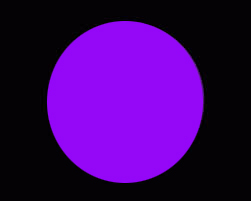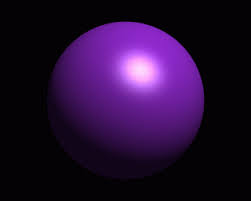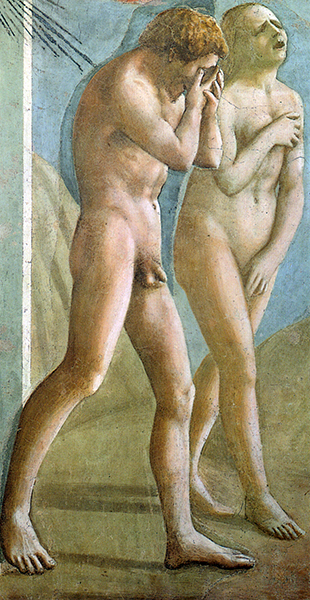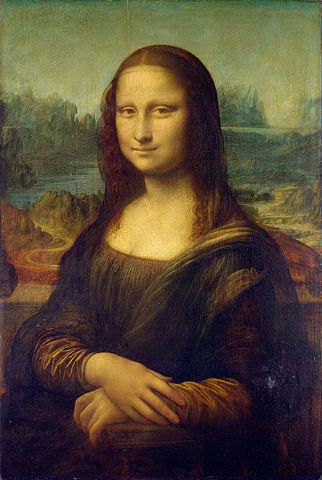|
READING
Illusion — Shading
In the section on space, it was explained how artists can create a sense of three-dimensional space on a two-dimensional surface.
To complement this convincing sense of space, it is necessary to produce figures and objects that also look three-dimensional.
To learn how to make figures or objects appear three-dimensional, artists observed how you see form and depth (dimension) in the real world and then cleverly reproduced the effect in paint.
The technique, called shading (or modelling), imitates the way light falls across three-dimensional shapes in real life.
Shading turns a two-dimensional shape into a three-dimensional object.
Light shining from a particular direction illuminates where it strikes but leaves in shadow other areas that it cannot reach.
Light gives an object relief.
By adding lighter colors and darker colors in a particular way, a flat purple circle is visually transformed into a solid-looking sphere.
 
The result is an image that tricks the eye into thinking it is seeing something three-dimensional.
Over the centuries, artists have developed ways of manipulating pigments and other media on a two-dimensional surface so that they appear to replicate the effects of light and shade on a three-dimensional object.
The Italian term chiaroscuro (chiaro = light; scuro = dark) refers generally to the technique of distributing light and dark tones in a way that models the forms in an image.
Chiaroscuro emerged during the Renaissance and remained a common means of producing an illusion of volume in forms until the late nineteenth century.
When the Italian Renaissance artist Masaccio painted the leg of Adam in his fresco of the Expulsion of Adam and Eve from the Garden of Eden, he painted the right side of the leg in a light color and the left side in a dark color, with a gradation from one to the other in the middle.

This arrangement of pigments shading from light to dark imitates the way light falls across three-dimensional objects in the real world. In this way, Masaccio gave Adam’s leg the appearance of a three-dimensional shape.
The effectiveness of the illusion is partly due to your tacit knowledge that Adam was a human, like us, and so it is expected that his leg, and the rest of him, should occupy three dimensions.
Masaccio further enhanced the illusion of the third dimension by painting a dark shape extending to the left behind Adam’s foot.
As you would in the real world, you see this shape as a shadow cast on the ground by Adam’s leg.
This adds to your impression of the figure as being a three-dimensional mass occupying space.
Shading can also be done using closely spaced lines or dots.
When the lines are arranged in parallel, it is called hatching.
When the lines are made to intersect, forming a web of lines, it is called cross-hatching.
When dots are used in shading it is called stippling.
Leonardo refined the effects of chiaroscuro modeling into a technique called sfumato (an Italian term meaning “smoky”).
Sfumato blurs details and renders shadows transparent, giving the appearance of an image seen as if through a thin veil of smoke.
In his portrait of Mona Lisa Leonardo used it to soften edges and lines and produce almost imperceptible tonal transitions from light areas to dark areas. The actual technique involves painting many layers of transparent glazes.

Tenebrism (a modern term derived from the Italian word tenebroso, meaning “dark”) is used to describe an exaggerated chiaroscuro applied to a whole composition.
The Italian Baroque artist Caravaggio used tenebrism in his painting of the �������������������������������Calling of Saint Matthew

A bright light, almost like a spotlight, shines into the composition from high on the right side to clearly illuminate figures and objects in its path but leaving large areas where is does not reach in deep shadow.
The contrast between the lighted portions of the composition and the shadows has the effect of heightening the drama of the moment.
|